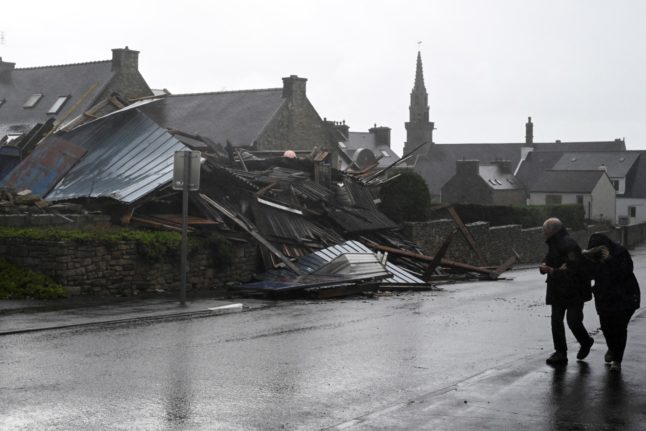One of the advantages of working for a Danish company – as opposed to being self-employed – are the employee benefits.
Many of the benefits, such as pensions that boost the modest retirement income provided by the state, are for the long-term and therefore easy to relegate to the back of your mind.
But it’s worth it to take some time upfront to ensure that they are set up in a way that benefits you the most.
Many companies in Denmark offer pension and insurance coverage to their employees via a third-party provider, often the same provider for both. In the first month or so of your employment, you may be invited to a meeting with an advisor to help you make some decisions.
If you aren’t automatically offered such a meeting, it is worth speaking to your HR department or manager for guidance as there are some decisions you’ll need to make.
Pension
Using NemID, the secure digital ID system provided to all Danish residents, you can view a full overview of all of your Danish pension accounts on the pensionsinfo.dk website.
The different kinds of pension included in this overview reflect the three main types around which the Danish pension system is based.
State sponsored pension (Folkepension): state-provided and not related to your employment.
ATP (Arbejdsmarkedets Tillægspension): a supplementary labour market pension scheme which nearly everyone in Denmark pays into. Deductions are automatically taken out of your paycheck – you can see them on your pay slips.
Private pension: anyone in Denmark can join a private pension scheme, and if your company offers a private pension programme, then you will also see line items on your pay slips for employer and employee contributions.
For those discussing private options with an employer, you and your advisor will consider personal and family situation and how comfortable you are with the various options before making a final decision.
If you think that you will leave Denmark before you retire, you should mention this to your pension advisor to discuss your options. You will generally be able to take the pension with you, but you will have to pay high taxes if you take the money before retirement age.
There may be some pension schemes for expats that can mitigate this — this is something you can discuss with the pensions advisor.
At what age can I retire?
A 2006 welfare agreement (Velfærdsaftalen) provides for a gradual increase in Denmark’s retirement age in line with increasing life expectancies. While each increase in line with the agreement must be re-approved by the sitting parliament every five years, it is already certain to change from 67 to 68 in 2030.
Next year, parliament will decide whether to confirm the subsequent increase, which would see the retirement age increase to 69 in 2035.
Danish law also provides for people who qualify for unemployment insurance payouts to take early semi-retirement through a scheme known as efterløn, depending on various criteria. We will cover this area in a later article.
How much is the state pension?
The state pension consists of a basic element (grundbeløb), which everybody gets, and a supplement (pensionstillæg), which is adjusted according to whether you live alone or with a spouse or partner. In 2019, these two elements add up to a maximum of 13,250 kroner monthly, before tax, for people who live alone; and 9,780 kroner per month before tax for people who are married or live with a partner.
The state pension can also be adjusted downwards if income from the two other types of pension is higher.
READ ALSO: What you need to know before signing up with Danish unions and unemployment insurance
Insurances
You may also be presented with a variety of insurance options. Some are included in your pensions package, while for others you will have some decisions to make.
Health Insurance: many companies provide private health insurance, which you can use in addition to the state health insurance. This may also include primary healthcare like seeing a chiropractor, psychologist or physical therapist.
It is a good idea to review what is covered before you actually ever need to use the insurance.
Disability insurance: this insurance is called loss of earning or occupational capacity. It protects you if lose the ability to work by continuing to pay you a percentage of your salary.
Your benefit generally includes a default level of coverage and then you can pay extra if you want to a higher level of coverage. It is especially important to review your coverage level if you have for example a mortgage, kids, or other serious financial obligations.
Life insurance: this benefit provides an amount to your beneficiary should you pass away while employed. You should review the amount of this coverage to make sure that your survivors will be amply covered. It’s not fun to think about, but it’s very important to get this right before anything unexpected happens.
Critical illness: this is often included in your benefits package and it’s basically a payment to you in the event that you become critically ill. Your provider will have a list of what illnesses count as critical. You can generally use the money however you wish, as it’s meant to ease the burden of dealing with a serious illness.
At the end of your meeting with your employer, you’ll get an overview of everything you’ve decided on and you should keep a copy for your records.
Sources: Borger.dk, FOA, Berlingske/Finansministeriet
READ ALSO: What you need to know about sick leave in Denmark



 Please whitelist us to continue reading.
Please whitelist us to continue reading.
Member comments